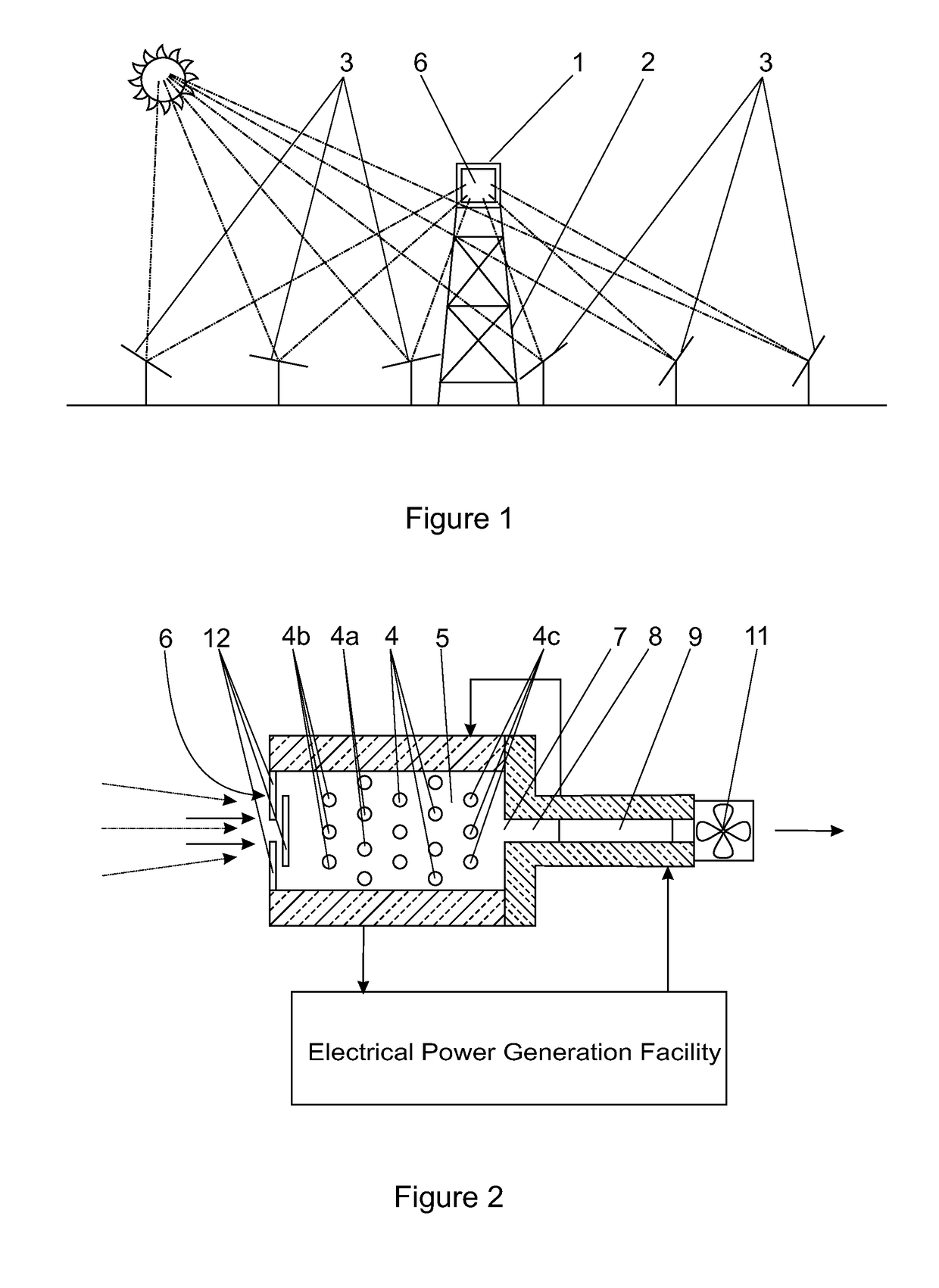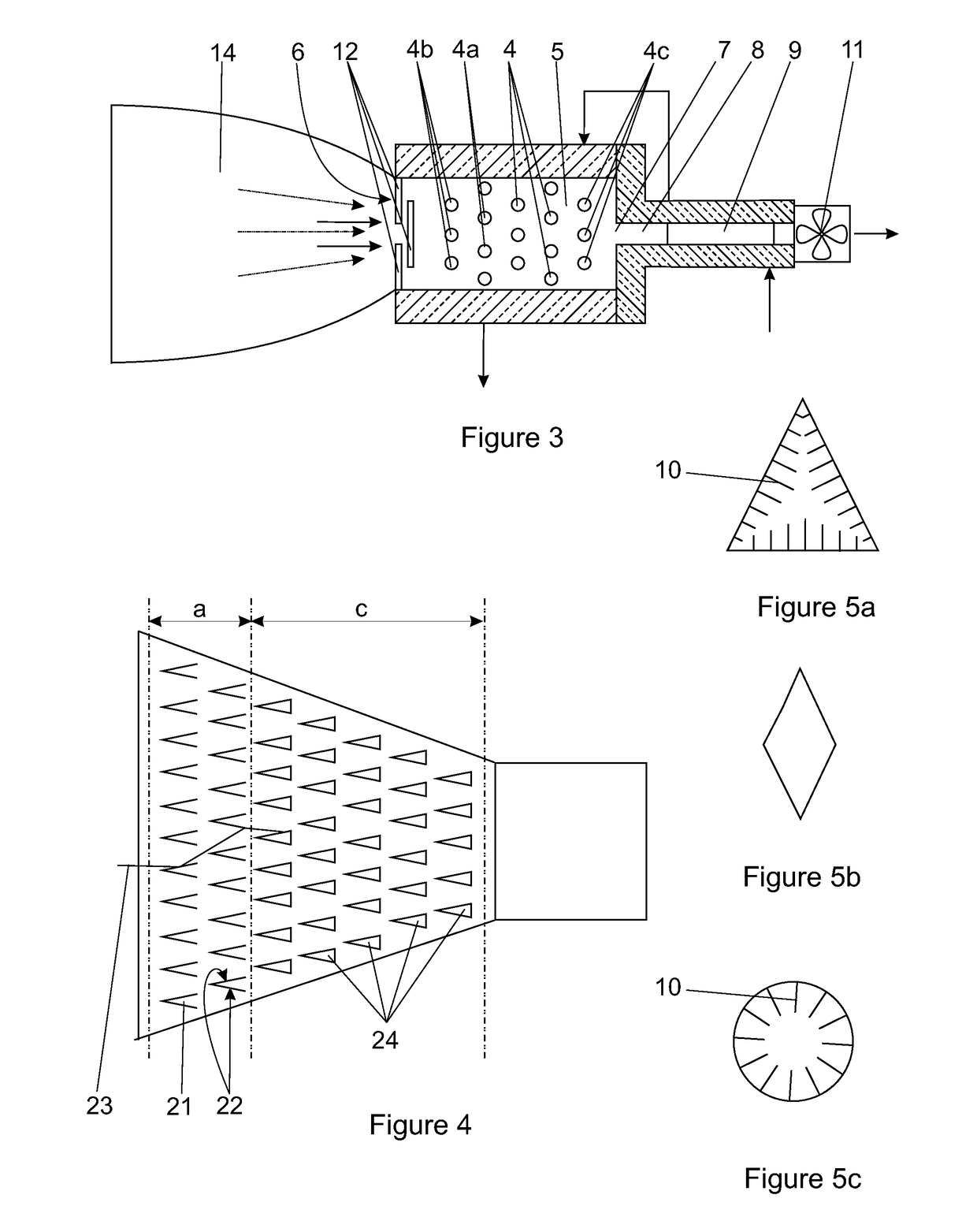Solar power tower receiver
a solar power tower and receiver technology, applied in the direction of solar heat collectors with working fluids, solar heat collectors for particular environments, solar radiation concentration, etc., can solve the problems of reducing the efficiency of the receiver, and reducing the optimum operating point of a power plant, so as to achieve the effect of improving efficiency
- Summary
- Abstract
- Description
- Claims
- Application Information
AI Technical Summary
Benefits of technology
Problems solved by technology
Method used
Image
Examples
Embodiment Construction
[0036]In the embodiment of the invention illustrated in the drawings a central receiver (1) for a solar power facility is mounted on the upper end of a tower (2) in a field of heliostats (3). The central receiver comprises an arrangement of transverse heat absorber tubes (4) located in a chamber (5) having a window (6) that, in use, is to receive solar radiation reflected by the heliostat field.
[0037]The window forms an air inlet for ambient air at atmospheric pressure to flow past and around the heat absorber tubes and an air outlet (7) is provided in an opposite region of the chamber such that air flows in through the window, past and over the absorber tubes, and out through the outlet.
[0038]The chamber (5) may be square in cross-section and it can be of any suitable shape from the window to the outlet such as rectangular, pyramidal, conical or parabolic. The angles for a pyramidal, conical or parabolic-shape of cavity will depend largely on the acceptance angle of the receiver.
[0...
PUM
 Login to View More
Login to View More Abstract
Description
Claims
Application Information
 Login to View More
Login to View More - R&D
- Intellectual Property
- Life Sciences
- Materials
- Tech Scout
- Unparalleled Data Quality
- Higher Quality Content
- 60% Fewer Hallucinations
Browse by: Latest US Patents, China's latest patents, Technical Efficacy Thesaurus, Application Domain, Technology Topic, Popular Technical Reports.
© 2025 PatSnap. All rights reserved.Legal|Privacy policy|Modern Slavery Act Transparency Statement|Sitemap|About US| Contact US: help@patsnap.com



